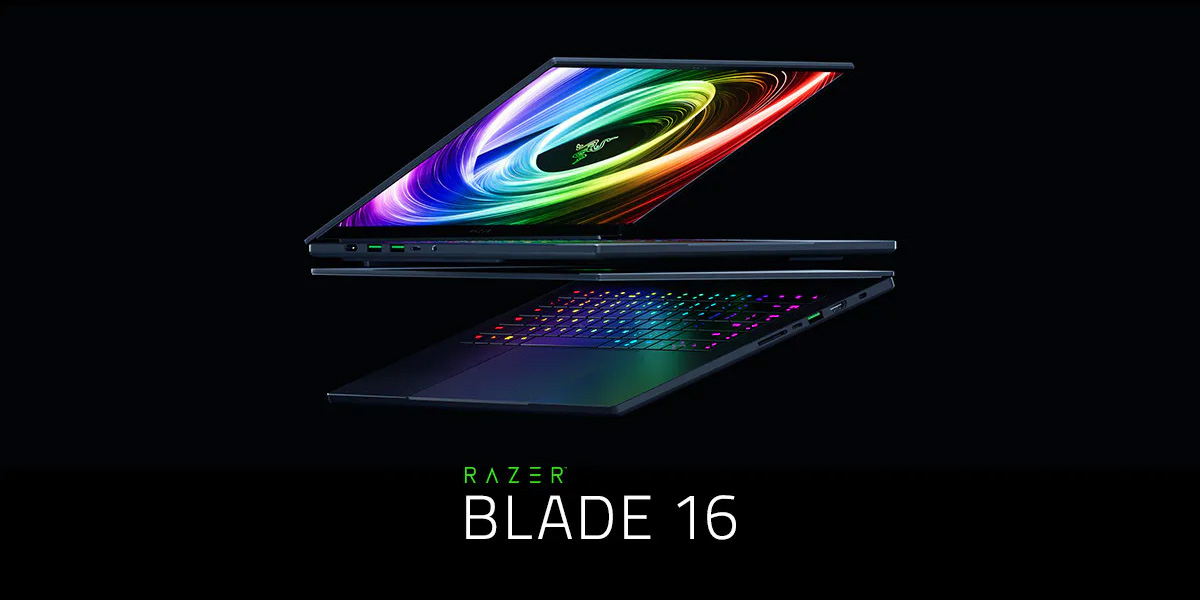Upgrading the storage or RAM in a high-end gaming laptop can be straightforward if you know what to expect for each model. Below, we break down how to do it on the Razer Blade 16 with tips on screw locations, cable cautions, compatible SSD sizes, maximum memory, and warranty considerations.
Upgrading Storage/RAM on a Razer Blade 16 Gaming Laptop (2023–2025)
Bottom screws and access
The Blade 16 uses Torx T5 screws on the bottom cover (size M2×L3.5). All screws are visible on the underside (no hidden screws), making removal of the aluminum bottom plate straightforward. Use a proper T5 driver and avoid using excessive force or power tools to prevent stripping. Pry gently around the edges to pop off the cover once screws are removed. No ribbon cables attach the Blade’s bottom cover to the motherboard – you can lift it off entirely once unscrewed.
SSD slots and compatibility
Blade 16 models feature two M.2 2280 NVMe slots for SSDs. In the 2023–2024 versions, only single-sided M.2 drives are supported in the secondary slot due to thickness constraints. (The factory-installed primary SSD can be double-sided, but the open slot must use a single-sided SSD to fit under the cover.)
Each slot supports up to a 4TB PCIe SSD; in total the Blade 16 can handle up to 8TB (2×4TB) if using appropriate drives. The newest 2025 Blade 16 changed to a soldered-RAM design and supports standard M.2 2280 SSDs up to 4TB per slot (no single-sided limitation noted). Always remember to remove any placeholder foam or standoff before inserting an SSD in an empty slot.
RAM max and configuration
The 2023 Blade 16 has two SO-DIMM slots supporting up to 64GB DDR5 (usually 5200 MHz effective). The 2024 refresh increased support up to 96GB DDR5 (with 2×48GB modules). The 2025 Blade 16 switched to LPDDR5X soldered memory available in 32GB or 64GB configurations (not user-upgradeable).
If you have a 2023–24 model with slots, you can upgrade the RAM by opening the bottom and swapping SO-DIMMs. Use quality 1.1V DDR5 modules and note that Razer downclocks higher-speed RAM to 5200 MHz for stability. In a Blade, RAM modules sit under heatspreader shields – carefully peel these off to access the slots.
Special cautions
There are no ribbon cables anchoring the Blade’s cover, and the battery connector is accessible once inside. Still, disconnect the battery before removing or installing RAM/SSD to avoid shorting anything. The Blade’s SSD slots may have thermal pads or shields; make sure to reattach any heatsink covers (the Blade often has a thermal shield over the primary SSD with three small screws). Also note that one of the primary SSD screws is very small (M2 x L3) – don’t mix it up with chassis screws.
Warranty notes
Upgrading the Blade 16’s RAM or storage does not void the warranty as long as you don’t damage the laptop. Razer explicitly states that any damage caused by self-upgrades is not covered, but simply adding an SSD or RAM is allowed. Be sure to follow static precautions and use the correct tools. If your Blade has warranty stickers on screws, know that in regions like the US these stickers do not legally void warranty for simple upgrades.
Tips for Storage/RAM Upgrade on a Razer Blade 16 Gaming Laptop
Ribbon-Cable and Screw Map Recap
Always refer to your laptop’s service manual or community guides for screw maps. Take pictures as you go so you remember cable connections and screw locations. Each model can use slightly different screw lengths – mixing them up can result in longer screws poking through or shorter screws not fully securing. Using a piece of paper with a drawn diagram to place screws can help keep them organized.
Compatible SSD Heights
These models use M.2 2280 (80 mm length) NVMe SSDs. Height (single vs double-sided) considerations: the Razer Blade (2023) caution to use single-sided in certain slots: Blade’s secondary slot is single-sided only. Generally, if a laptop comes with a heatsink or cover, it can accommodate a standard double-sided drive. If you try to install a very thick SSD and feel resistance when putting the cover back, double-check that the drive is fully seated and any spacer standoffs are correct.
Max RAM Summary
Blade 16 up to 64GB (2023) or 96GB (2024) with slots. These are the official or commonly achieved maxima. In the future, BIOS updates may enable higher limits if larger SO-DIMMs become available (e.g., 48GB modules for 96GB total on dual-slot systems).
Warranty and Final Notes
Razer allows end-user upgrades of RAM and storage, in its straightforward but tightly packaged internals. A good practice is to perform upgrades early in the product’s life (so if anything is off, you can address it under warranty). Keep your receipts for new components and consider running a stress test after upgrading (to ensure the new RAM/SSD is seated and functioning properly). If something isn’t recognized, recheck connections. And keep the old parts – if you need warranty repair, they might request the laptop in stock configuration.
For a deep comparison of the top gaming laptops, check our buyer’s guide to high-end gaming laptops, and for tips to upgrade other top laptops, check our upgrading guides for:
Sources
- Razer Support, How to upgrade the storage on the Razer Blade, mysupport.razer.com
- Razer Support, Razer Blade maximum supported storage and memory, mysupport.razer.com
- Razer Insider, “‘Standoff’ for Second SSD in 2023 Blade 16?”, insider.razer.com
- Thumb image: razer.com




